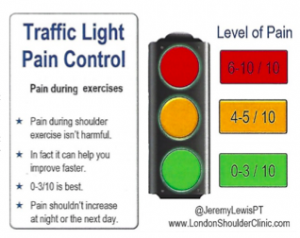Tendon Rehabilitation: Is it ok if my home exercises hurt?

A common question we get asked in clinic regularly is if the prescribed home exercise should hurt when they’re done. The answer is everyone’s favourite: “It depends.”
 Professor Hakan Alfredson, an orthopaedic surgeon, was a pioneer in tendon research who stumbled upon a treatment for tendon pain when he developed a painful Achilles tendinopathy (photo credentials). When rest and over the counter medication failed to help, he started considering other options. He asked his colleague then to operate on his tendon but they declined and told him it wasn’t serious enough for surgery. Dr. Alfredson then put himself through a series of painful exercises trying to make his tendon condition worse and much to his surprise, his tendon got better.
Professor Hakan Alfredson, an orthopaedic surgeon, was a pioneer in tendon research who stumbled upon a treatment for tendon pain when he developed a painful Achilles tendinopathy (photo credentials). When rest and over the counter medication failed to help, he started considering other options. He asked his colleague then to operate on his tendon but they declined and told him it wasn’t serious enough for surgery. Dr. Alfredson then put himself through a series of painful exercises trying to make his tendon condition worse and much to his surprise, his tendon got better.
Now I am not trying to say that you should ignore your pain during while you participate in an activity. There are some activities that could aggravate tendon pain and each area tends to have its own provocative positions. Your therapist can point you in the right direction and help you discern what’s appropriate and what’s not. A guided exercise program with graded intensity has been repeatedly shown to be one of the best interventions to address tendon pain.
How much pain is ok?
Generally some discomfort is to be expected during the prescribed home exercises.
The graphic below is from Dr. Jeremy Lewis about the shoulder applies well to tendon pain. Typically we say up to a 3/10 pain is a good zone to operate in for comfort but that doesn’t mean that 4/10 is doing harm or damage. The pain has to be acceptable and not increase the next day.

How do I know if you did too much?
Tendons are different to other parts of our body. We see a different response pattern when thinking about changes in symptoms. Typically, tendons will speak to you in 24 after a spike in activity. It is important to keep a mental note of the amount and intensity of activity done to monitor the delayed response after exercising in order to modify the amount of activity.
What to do if you experience a flare up?
The best approach after a flare up is to perform activities back off the exercise for a day or two until things settle down followed with a gradual re-introduction of activity as guided by your therapist.
Iyad Salloum, MPT, IMS

About twice a month our therapists will be posting answers to commonly asked questions. So, if you have a burning question that you want answered let us know in the comments below.
We can cover anything ranging from active rehabilitation, to injury prevention.
This week our featured therapist is Iyad Salloum. To learn more about Iyad check out our PhysioWorks team.


Leave a Reply